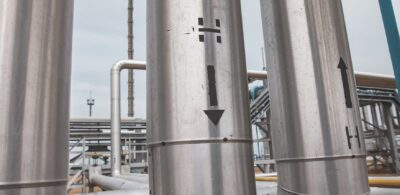Funding Australia’s first hydrogen project
30 April 2021
Following US President Joe Biden’s recent commitment to cutting the United States’ carbon emissions by 50-52% below 2005 levels by 2030, the Morrison Government, who are committed to a 26-28% cut by 2030, announced a further A$540 million would be allocated in its upcoming budget to hydrogen to support the establishment of five hydrogen hubs to be operational by 2022.
The A$540 million supplements the existing A$70 million funding for the industry, and further signals the government’s growing support for the sector, but commercialising Australia’s first hydrogen project will require significantly more in funding. This funding will mostly come from commercial banks and most likely through non-recourse funding which requires specific considerations to ensure that the funding is available.
In light of this, we explore the key hurdles that lenders, sponsors, regulators and policy makers must all consider to unlock this funding.
Offtake agreements
Similar to the LNG industry in the 1990s, securing long-term offtake agreements will play an instrumental role in validating hydrogen projects in Australia.
The quantum of a project’s projected offtake capacity that must be contracted to secure project financing for an energy project will vary from project to project and will, in part, be dependent on the balance sheet of the project sponsor and what it is willing to commit to the project. We estimate that at least 50% of the projected offtake capacity will be required to be contracted, with weaker sponsors requiring a greater percentage.
The CSIRO has predicted that long-term ‘take or pay’ offtake agreements of 20 to 25 years with a flat demand profile will be the most desirable in the near-term. However, shorter term offtake agreements of up to 10 years are likely to become more attractive over time once the spot market matures.[1]
Green risk
A project’s chosen method of hydrogen production will also affect its bankability as lenders are increasingly shifting away from projects that are considered to be ’carbon intensive’ or ’environmentally damaging’.
With respect to hydrogen, this translates into an expectation that green hydrogen projects will be favoured by lenders over grey, blue and brown projects. However, ’green hydrogen’ projects at a commercial scale remain unproven and in the short term only appear feasible with substantial government and policy support.
For now, we expect blue and grey (and in rare circumstances brown) projects to remain bankable but sponsors will be required to demonstrate how they will minimise the carbon emitted from their projects, particularly as lenders remain reticent to fund fossil fuel projects. Whether lenders accept carbon reduction in the form of carbon capture and storage (CCS), the purchase of renewable certificates or otherwise is not yet clear.
Once green hydrogen is proven commercially, projects will be bankable if they can obtain ’green’ certification for their final product.
This may also be relevant when considering the potential use of the hydrogen. For example, where green hydrogen is used to produce green steel, the overall environmental credentials of the supply chain may have a multiplying effect on the attractiveness of the venture to financiers.
Technology confidence
While the long-term attractiveness of green hydrogen projects is encouraging, the supporting technology is either still under development or not yet commercially viable or scalable.
With respect to green hydrogen, the lack of proven large-scale electrolyser application and the certainty of having to interrupt supply to replace defective electrolysers during a project’s lifetime represents two of the technological bankability risks to lenders. To counter this risk, lenders will likely require sponsors to quantify and minimise their exposure by ‘down-streaming’ the electrolyser-related risk to contractors. For example, a project which intends to:
- install electrolysers with manufacturer guarantees of 60,000 hours of operation; and
- use electrolysers to produce hydrogen for at least 20 hours each day (7,300 hours annually),
should require warranties of fitness and replacement obligations for the electrolysers from its engineering, procurement and construction contractors lasting for at least 8.2 years to cover the risk. This places the risk on the contractor to obtain adequate warranties, guarantees and support from the manufacturer. Financiers may also wish to see performance guarantees in relation to production of the plant (as is common in many power projects).
In terms of non-green projects that will rely on CCS, CCS has long been discussed as an option but lacks widespread adoption due to the significant upfront costs with limited revenue benefits (unless a ‘green’ pricing premium can be obtained from customers). However, this may change in the coming years as a number of projects are currently underway in Australia.
A further technology-related consideration for financiers may be the environmental credentials for the source of water for any hydrogen production plant.
Regulatory framework
Lenders will typically require regulatory certainty from conception to completion, which will require a project holding all necessary approvals and permits by the date for financial close. This does not mean all approvals must be obtained, and nor is it plausible as the regulatory framework for hydrogen in Australia remains subject to extensive amendment and development. Nonetheless, when sourcing, debt sponsors must be prepared to explain and show a clear pathway of what is required to happen for the project to reach completion, including any legislative amendments.
By way of example and with respect to CCS, the bankability of projects using CCS in the United States has recently been enhanced through the creation of Section 45Q tax credits, which allow sponsors to garner tax credits for each ton of carbon dioxide sold or stored.
While the Australian governments appear more focused on direct funding support for CCS implementation (through bodies such as Australian Renewable Energy Agency and the Clean Energy Finance Corporation (the CEFC)), implementing a similar tax incentive in Australia would increase the bankability of blue, grey and brown hydrogen projects.
Export credit agency support
Sponsors of export focused projects will be able to enhance the bankability of their projects by securing export credit agency (ECA) support from the ECAs of their customer base or government funding from Australian bodies like the CEFC.
ECA support is critical in particular for projects where the customer base is not well known to the lenders or their credit rating is poor, as in many cases the ECA can provide guarantees for that customer. This de-risks projects as lenders will consider the project to be supported by the credit rating of that ECA’s government.
Early signs of the potential for ECA involvement in Australia’s hydrogen projects are encouraging as:
- the Japan Bank for International Cooperation (JBIC) has included Australia as an eligible country to receive export credits and overseas investment loans;[2]
- the Nippon Export and Investment Insurance’s (NEXI) commitment to green innovation is likely to extend to hydrogen projects; and
- Germany has revealed plans to invest €2 billion into international partnerships as a part of its National Hydrogen Strategy.
By way of local government support, the CEFC has demonstrated over the past decade its ability to de-risk projects and create bankable wind and solar projects. The CEFC’s involvement in the hydrogen sector should have the same effect, particularly due to its ability to provide funds subordinated to commercial lenders and on longer tenors.
Transportation
Given Australia’s geographical isolation, project sponsors should be aware that lenders will require assurance that a project has secure hydrogen transportation arrangements in place.
Hydrogen projects in Australia, particularly those aligned with any of the prospective hydrogen hubs, will likely need to convert any hydrogen produced into ammonia in order to export it. While over 180 million tons per year of ammonia are traded globally each year, only around 10% of this amount is exported. Spikes in demand for ships capable of transporting ammonia may create issues in exporting offtake from a project in the near-term. Project sponsors should ensure they engage with shipping interests and put in place transportation arrangements early, to demonstrate to lenders that they are attempting to minimise demand bottlenecks.
Alternative means for transportation, such as the liquefying hydrogen, will require significant capital investment in terms of wharf facilities, handling and shipping and will come with potential health and safety considerations.
Recipe for bankability
Project sponsors will need to ensure that they can demonstrate a secure hydrogen-to-customer pipeline to lenders. This includes demonstrating executed or executable offtake agreements and reliable transport logistics. Project sponsors can further increase their project’s bankability by targeting customers in countries with recognised hydrogen policies and strong credit support (such as Japan and Germany) and by engaging early and proactively with regulators in Australia and shipping interests overseas.
Lender concerns about green and non-green hydrogen projects will centre on different things. For green hydrogen projects, lenders will be wary of the unproven scaling of electrolyser technologies required for projects with larger output, whereas for non-green hydrogen projects, lenders’ considerations will focus on projects’ long term offtake potential, in light of its likely customers and the global focus on using hydrogen to meet emissions targets.
[1] S Bruce et al, National Hydrogen Roadmap (CSIRO, Australia, 2018) 53.
[2] JBIC, Announcement and Enforcement of the “Cabinet Order for Partial revision to the Enforcement Order of the Japan Bank for International Cooperation Act (2020).
Authors

Partner
Associate
Tags
This publication is introductory in nature. Its content is current at the date of publication. It does not constitute legal advice and should not be relied upon as such. You should always obtain legal advice based on your specific circumstances before taking any action relating to matters covered by this publication. Some information may have been obtained from external sources, and we cannot guarantee the accuracy or currency of any such information.



